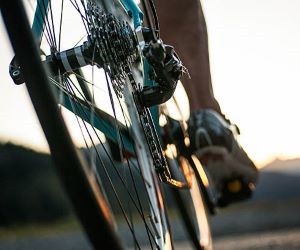Learn how to deal with punctures on long rides with prevention tips, repair techniques, and smart gear choices to keep rolling without stress.
HOW DO I KEEP CYCLING SHOES ODOR-FREE?
Cycling shoes are performance gear, but they’re also odor magnets. Sweat, bacteria, and trapped moisture create the perfect storm for bad smells. Riders often overlook shoe care, assuming odor is unavoidable. The truth? With consistent cleaning, smart drying, and preventive strategies, you can extend shoe life and keep them fresh. This guide covers why cycling shoes smell, which mistakes worsen the issue, and the most effective hacks—from natural remedies to modern tech solutions. Whether you’re a weekend rider or indoor cycling devotee, these odor-fighting strategies will keep your shoes breathable, clean, and ride-ready.

Understanding shoe odor
Before fixing odor problems, it’s important to understand why cycling shoes smell in the first place. Unlike running shoes, cycling shoes are stiff, structured, and often poorly ventilated. That rigidity helps transfer power to the pedals, but it also traps heat and moisture, creating a microclimate where odor-causing bacteria thrive.
The science behind the smell
When your feet sweat, the moisture itself is odorless. The smell arises when sweat interacts with bacteria that naturally live on the skin. In a closed, poorly ventilated space like a cycling shoe, bacteria multiply quickly. Over time, residues from sweat and skin cells build up, embedding deep into shoe liners and insoles.
Moisture + heat = bacterial growth.
Synthetic materials trap odor more than natural fibers.
Closed shoe design limits airflow and drying.
Residue builds up with every ride if not cleaned.
When odor signals bigger issues
Persistent odor may signal more than sweat — it can indicate fungal growth such as athlete’s foot. Ignoring it not only shortens shoe lifespan but also risks foot health. Recognizing this early helps cyclists treat shoes and feet proactively, instead of just masking the smell.
In short, odor is a symptom of bacterial imbalance. Address the environment that fuels bacteria, and you stop odor at its source rather than just covering it up.
Cleaning and drying techniques
The foundation of odor control is proper cleaning and drying. Cycling shoes can’t be tossed casually into a washing machine without risking damage, but with the right techniques, you can keep them spotless and odor-free.
Step-by-step cleaning process
First, remove insoles and wash them separately with mild soap and water. For the shoe body, wipe down with a soft brush or sponge dipped in warm soapy water. Avoid soaking, as waterlogged cycling shoes lose shape and integrity. Rinse lightly and air-dry.
Use antibacterial soap to cut bacteria growth.
Never use harsh chemicals — they degrade materials.
Brush cleat areas carefully where grime accumulates.
Clean insoles weekly during peak training season.
Drying the right way
Drying is where many cyclists slip. Leaving shoes in a gym bag or garage creates a damp breeding ground. Instead, stuff shoes with newspaper to wick moisture and speed drying. For high-tech solutions, use a shoe dryer with low heat circulation. Always avoid direct heat sources like radiators or hair dryers — they warp materials.
Think of cleaning and drying as the regular "maintenance schedule" for your shoes. Just like you wouldn’t ride a bike without lubing the chain, you shouldn’t ride repeatedly without refreshing your shoes.
Preventive strategies
Once shoes are clean and dry, the real goal is prevention. Building odor resistance into your routine keeps bacteria from regaining ground. This means controlling moisture, reducing bacterial load, and maintaining airflow consistently.
Everyday odor hacks
Several low-cost habits can dramatically reduce odor over time. Rotate shoes if possible, giving each pair a full day to dry. Use moisture-wicking cycling socks made of merino wool or technical synthetics instead of cotton. Apply baking soda or activated charcoal inserts overnight to neutralize bacteria-friendly environments.
Spray shoes with a vinegar-water solution post-ride.
Use cedar shoe inserts to absorb moisture and deodorize.
Apply foot powder before rides to reduce sweat.
Rotate between two pairs of cycling shoes for longevity.
When to replace gear
Sometimes, despite your best efforts, odor lingers because bacteria are too deeply embedded. In that case, replacing insoles or upgrading to antimicrobial liners can reset freshness. If even the shoe shell smells permanently, it may be time to invest in a new pair. Think of it like replacing worn tires — preventive care extends life, but replacement eventually becomes inevitable.
By combining cleaning, drying, and prevention, you create a cycle of freshness. The payoff? Shoes that smell neutral, last longer, and support your rides without distraction.
YOU MAY ALSO BE INTERESTED






